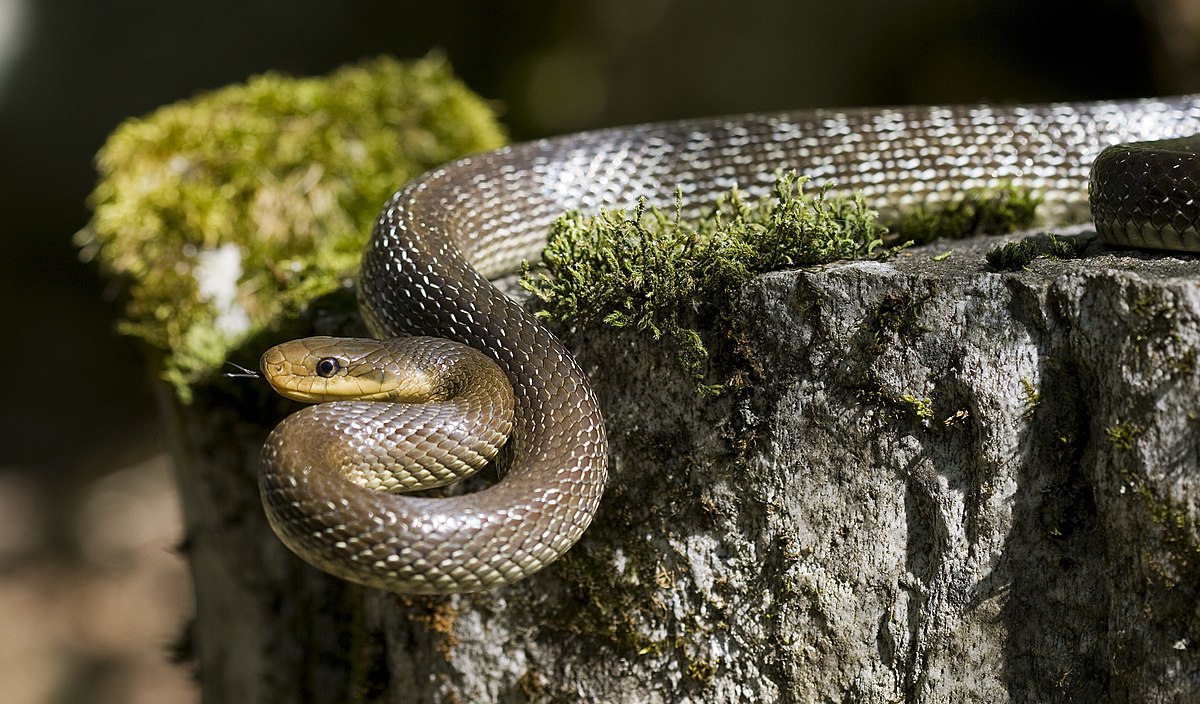Corfu, a stunning Greek island nestled in the Ionian Sea, boasts a rich variety of flora and fauna, including some intriguing species of snakes. While reptiles may not be the main draw for tourists, understanding the types of snakes inhabiting the island can be both fascinating and crucial for safety reasons. In this article, we will delve into the snakes that can be found on the island of Corfu, to equip visitors and nature enthusiasts with the necessary knowledge.
Two notable snake species on the island are the Horned Viper and the Sand Boa, also known as the Javelin Sand Boa. The Horned Viper is considered one of the most dangerous snakes in Europe due to its venom. Although it can be found on Corfu, this snake should be approached with caution and given a wide berth. In contrast, the Javelin Sand Boa, a member of the Boidae family or Giant Snakes, is less fearsome in size, typically measuring around 80 centimeters long.
In addition to these two species, Corfu is home to a range of reptiles such as lizards, turtles, and tortoises. As you journey through the breathtaking landscapes of this green island, keep an eye out for these fascinating creatures, while also maintaining a respectful and safe distance when needed.
Overview of Snakes in Corfu

Corfu is a beautiful Greek island that is home to a diverse range of wildlife, including a variety of snake species. This section discusses the native snake species found on the island and distinguishes between venomous and non-venomous snakes.
Native Snake Species
Corfu hosts various snake species due to the presence of diverse habitats across the island. Notable species found in Corfu include the Sand Boa (Eryx jaculus), Aesculapian Snake (Elaphe longissima), Leopard Snake (Elaphe situla), Cat Snake (Telescopus fallax) and the elusive Horned Viper (Vipera ammodytes). The island is also home to several turtle species, including the loggerhead sea turtle (Caretta caretta), and reptiles such as lizards and terrapins.
Venomous vs Non-Venomous
Understanding the difference between venomous and non-venomous snake species is important for those exploring Corfu’s natural environment. Here is a brief overview:
Venomous snakes:

- Horned Viper (Vipera ammodytes): This is the most dangerous snake species in Europe and can also be found on Corfu. It has long fangs to deliver venom and a distinctive horn on its head. It has a long reach, so it is advised to keep your distance and seek immediate medical attention if bitten.
Non-venomous snakes:

- Sand Boa (Eryx jaculus): This snake prefers dry, sandy areas and avoids forests or meadowland. It has an excellent camouflage which it uses to ambush prey. It is not venomous and poses no threat to humans.
- Aesculapian Snake (Elaphe longissima): A non-venomous snake that can grow up to two metres in length. It is a skilled climber and can often be found in trees.
- Leopard Snake (Elaphe situla): Characterised by its striking pattern, this non-venomous snake can be found in various habitats, from forests to grasslands.
- Cat Snake (Telescopus fallax): Although it belongs to the family of venomous snakes, its venom is weak and poses no significant threat to humans. This nocturnal snake can be found in rocky areas or amongst vegetation.
While exploring Corfu, it is important to remain cautious around snakes and maintain a safe distance, regardless of whether a snake is venomous or not.
Common Snakes in Corfu
Corfu, a beautiful Greek island, is home to several snake species. This section provides an overview of three common snake species found on the island: European Cat Snake, Large Whip Snake, and Grass Snake.
European Cat Snake

The European Cat Snake (Telescopus fallax) is a nocturnal, rear-fanged, mildly venomous snake found throughout Corfu. Although their venom is not dangerous to humans, these snakes typically feed on small mammals, birds, and lizards. European Cat Snakes have a slender body, measuring anywhere from 60 cm to 1 metre in length. These snakes have an olive-brown to greyish-brown colouration and can be easily identified by their vertical, cat-like pupils.
Large Whip Snake
The Large Whip Snake (Dolichophis caspius) is another common species found on Corfu. They are diurnal, meaning they are active during the day, and non-venomous. Large Whip Snakes are known for their speed and agility, which they use to hunt their primary prey, lizards. These snakes can reach lengths of up to 2 metres, making them one of the largest European snake species. They are often seen sunbathing on rocks or climbing trees and have a distinctive black or dark brown colouration.
Grass Snake

The Grass Snake (Natrix natrix), also known as the Ringed Snake or Water Snake, is a non-venomous, semi-aquatic snake commonly found in freshwater habitats across Corfu. Grass Snakes are excellent swimmers and feed mainly on amphibians like frogs and newts. They can grow up to 1 metre in length and have a beautiful greenish-grey to dark black colouration with a yellow or white collar on the back of their head. Their belly is typically yellow with dark spots, providing further distinction from other species.
In conclusion, these are just three of the many snake species found on Corfu. While some may feel apprehensive about encountering snakes, they play an essential role in the island’s ecosystem and should be respected as such.
Rare and Endemic Snakes
Nose-Horned Viper

The Nose-Horned Viper (Vipera ammodytes) is one of the most dangerous snake species in Europe, and it can be found on the Greek island of Corfu. This venomous snake is known for its characteristic horn on its snout, which earned it its name. The viper prefers rocky habitats and is primarily active during the day, but may switch to a nocturnal lifestyle if temperatures rise.
Their colour pattern typically consists of a zigzag along their back, with shades of grey, brown, or reddish-brown. When encountered on the island, it’s important to maintain a safe distance, as its venomous bite can be quite dangerous to humans. In case of a bite, seek immediate medical attention by calling the common emergency number 166.
Leopard Snake

Another rare snake found on the island of Corfu is the Leopard Snake (Zamenis situla). This non-venomous snake can be easily recognized by its distinctive leopard-like pattern, featuring light and dark bands along its back. It usually grows up to 60-90 centimeters in length and has smooth scales, giving it a sleek appearance.
Leopard Snakes usually inhabit open woodland and grassland areas, where they feed on small mammals, birds, and reptiles, including lizards. Being an oviparous species, female Leopard Snakes lay eggs during late spring or early summer, which hatch after a few months. Despite their rarity on Corfu, these snakes are relatively harmless to humans and are a fascinating presence within the island’s ecosystem.
Conservation Efforts and Protection
Habitat Preservation
Protecting the natural habitats of snakes in Corfu is crucial for their survival. Habitat preservation efforts focus on maintaining the diverse range of environments in which these reptiles thrive, including forests, wetlands, and coastal areas. By protecting these ecosystems, not only do we ensure the survival of snakes in Corfu but also support the overall biodiversity of the island.
Public Education and Awareness
Educating the public about the snakes of Corfu and their importance for the island’s ecosystem is essential for conservation efforts. On a local level, schools and health centres should be equipped with posters and informational materials about Corfu’s snakes, their habitats, and the actions to take in case of an encounter.
One of the dangerous snake species found in Corfu is the Horned Viper. Creating awareness about this venomous snake and the appropriate medical response in case of a snakebite (e.g., calling the Common Emergency Number, 166) can help prevent incidents and ensure the snake’s survival.
Prevention and Conflict Mitigation
The goal of conflict mitigation is to develop strategies for avoiding negative human-snake interactions. This includes providing guidance on avoiding snake habitats and proper actions to take during an encounter. Efforts to reduce human-snake conflicts can lead to greater peaceful coexistence between humans and snakes, resulting in better conservation outcomes for the reptiles in Corfu.



